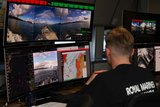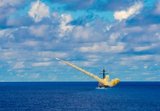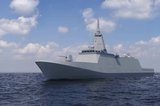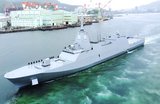US Navy accepts future USS Paul Ignatius
The US Navy received its 67th Arleigh Burke-class guided missile destroyer, the future USS Paul Ignatius (DDG 117), from Huntington Ingalls Industries' (HII) Ingalls shipbuilding division on 22 February 2019.
Prior to delivery, the vessel conducted a series of at-sea and pier-side trials to demonstrate its material and operational readiness.
The DDG-51 class ships currently being constructed are Aegis Baseline 9 Integrated Air and Missile Defense destroyers. The vessels feature increased computing power and radar upgrades that improve detection and reaction capabilities against air warfare and ballistic missile defence threats.
HII's Pascagoula shipyard is also currently in production on the future destroyers Delbert D. Black, Frank E. Peterson Jr., Lenah H. Sutcliffe Higbee and Jack H. Lucas, the first Flight III ship.
HII is under contract for an additional six Arleigh Burke class destroyers that will be constructed in the Flight III configuration with enhanced air and missile defence capabilities.
More from Naval Warfare
-
![NATO tests use of “undetectable, jam-proof” laser communication in maritime scenarios]()
NATO tests use of “undetectable, jam-proof” laser communication in maritime scenarios
As part of its effort to better prepare its capabilities for operations in contested and congested scenarios, NATO evaluated a Lithuanian ship-to-ship terminal designed to not be susceptible to enemy interference.
-
![US Navy advances with the Harpoon Service Life Extension Programme]()
US Navy advances with the Harpoon Service Life Extension Programme
The US Navy plans to improve Harpoon’s anti-ship and land attack capabilities by equipping the missiles with sensors and technologies required for succeeding in future battlespace.
-
![Mitsubishi eyes future with Australia’s Mogami selection]()
Mitsubishi eyes future with Australia’s Mogami selection
With Australia’s selection of the Mogami-class for Project Sea 3000, Mitsubishi is investigating local production in the next decade as potential export opportunities emerge.
-
![Thales’ new Sonar 76Nano could equip UK Royal Navy on anti-submarine warfare missions]()
Thales’ new Sonar 76Nano could equip UK Royal Navy on anti-submarine warfare missions
The new sonar is designed to equip uncrewed underwater vessels, with the potential to be used by the Royal Navy for its Atlantic Bastion and Atlantic Net missions.
-
![Hanwha wins Australian government approval to increase its stake in Austal]()
Hanwha wins Australian government approval to increase its stake in Austal
The contract would mean the two shipbuilders can collaborate strategically and enhance shipbuilding capabilities in Western Australia.























